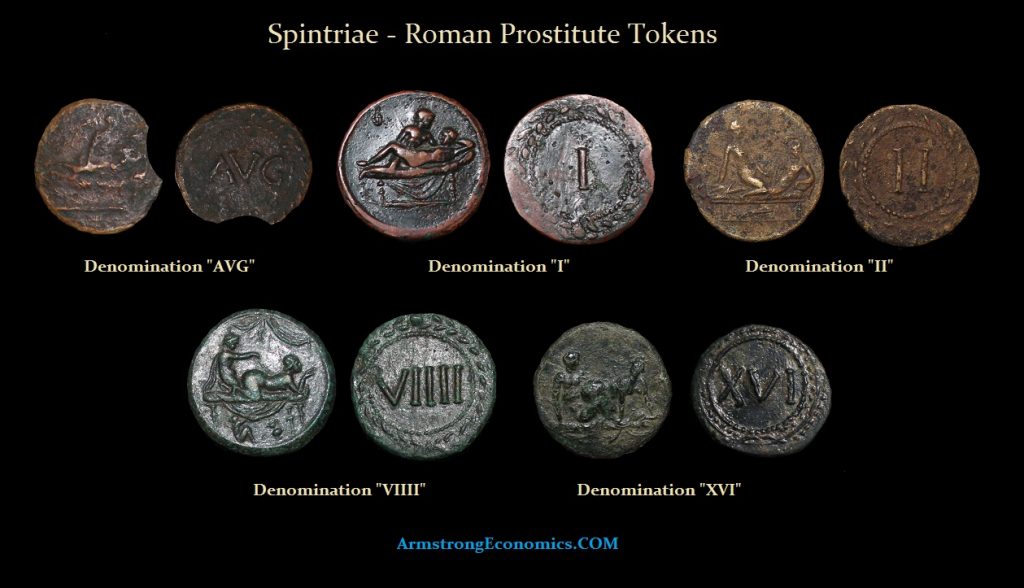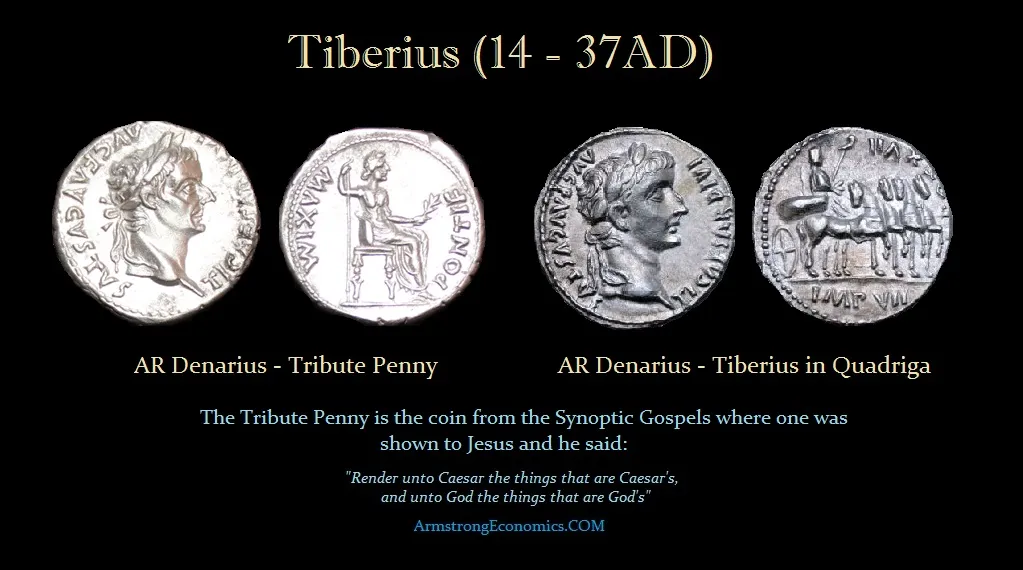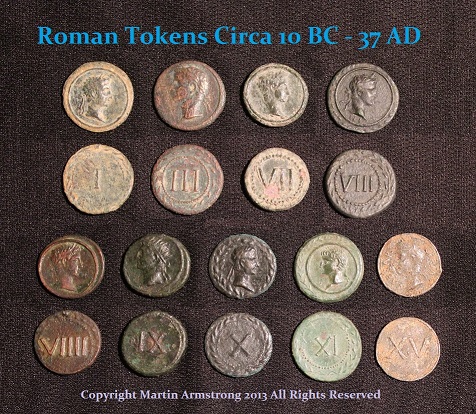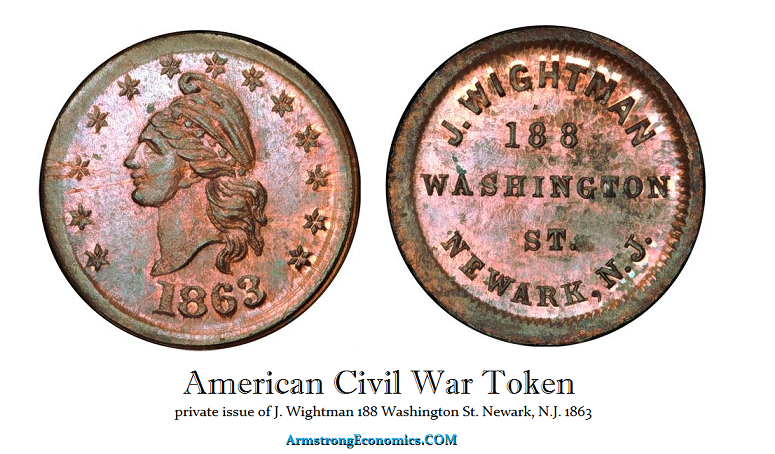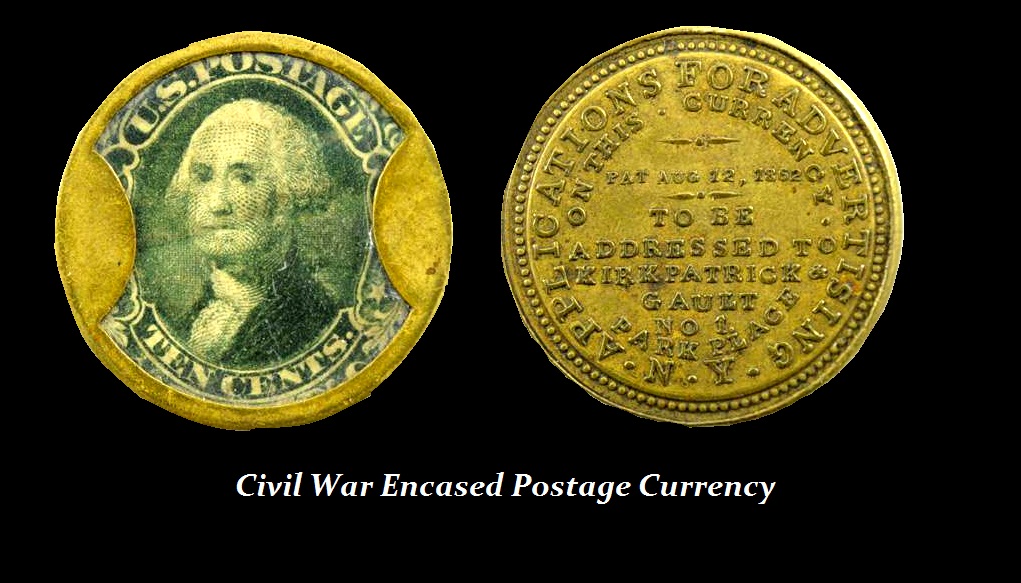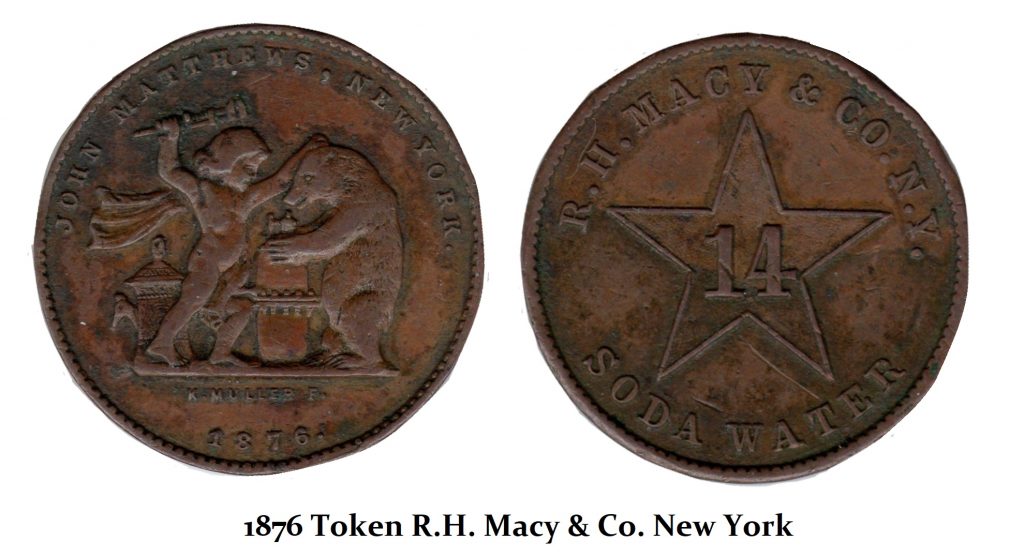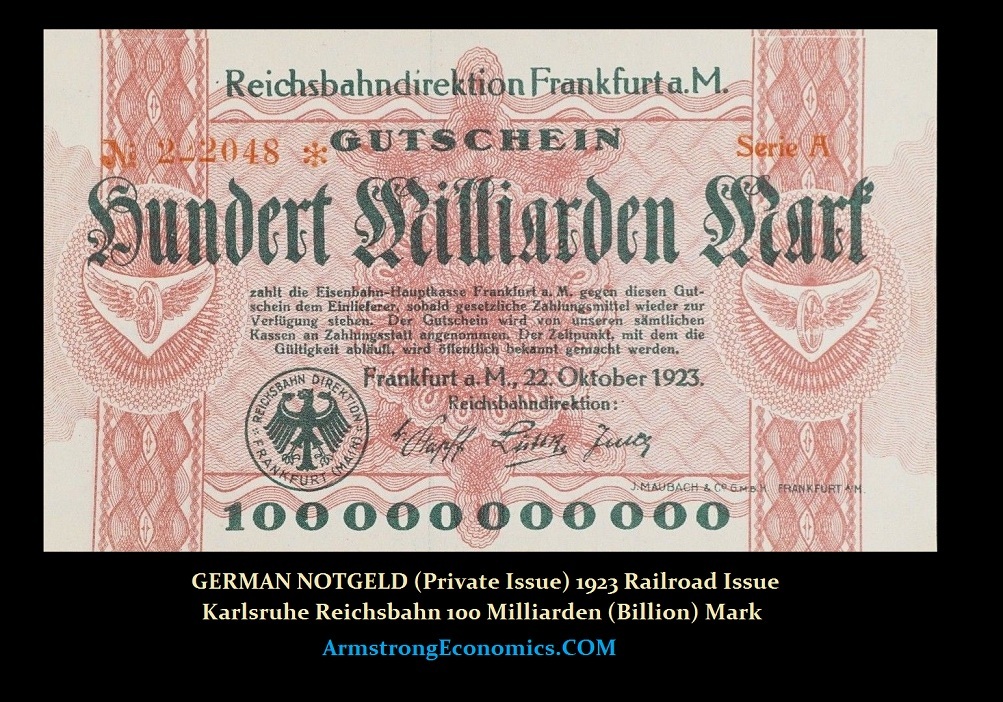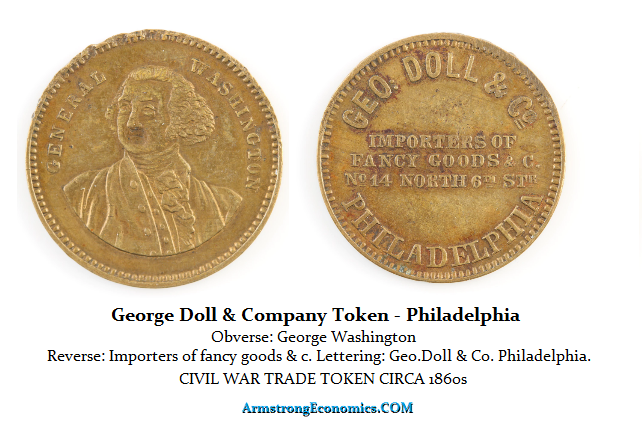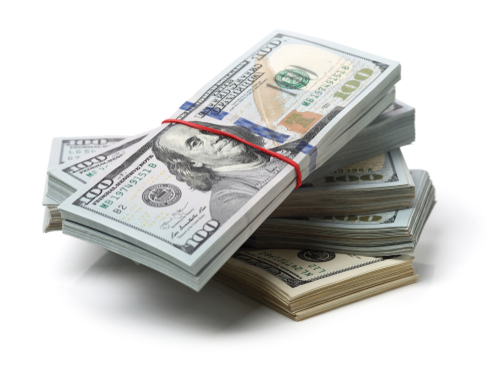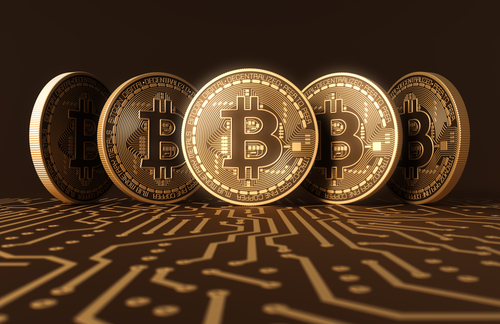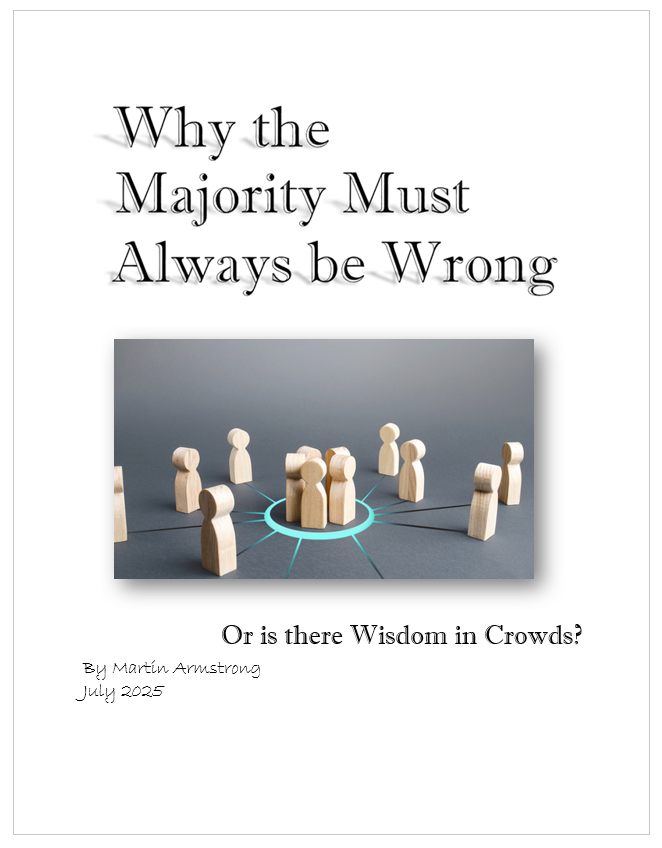QUESTION: Marty, I found your passing comment on cash-like coupons by private stores becoming cash in the digital world. Could you elaborate?
thank you as always
BK
ANSWER: Aside from the ancient Roman prostitute token, we have often found private tokens emerge as money during periods of shortages in physical money. The Roman Emperor Tiberius (14-37AD) was notoriously frugal. Where his predecessor Augustus (27BC-14AD) minted coins like no other emperor with so many varieties well over a 100, Tiberius reduced everything to two designs and cut the money supply. He ended up creating a Financial Panic of 33AD which was also a shortage of cash like during the Great Depression.
Hence, we find not only the prostitute tokens but a full range of tokens with different numerals on the reverse expressing value. One theory argued that they were tickets for entrance to the theater or the games, and the numerals represented sections in the stands, or that they were brothel tokens, with the obverse representing a chosen “product” and the reverse the price. However, this theory seems unlikely when one considers that the two seemingly divergent themes are joined by the same die links to the numeral reverses.
Alberto Campana (“Le Spintriae: Tessere Romane con Raffigurazioni Erotiche,” in La Donna Romana Imagini e Vita Quotidiana [2009], pp. 43-96) has published a new die study of the erotic pieces, recording eight specimens with at least basic find spot information, most notably a sealed tomb in Modena, firmly dated to the mid-late Julio-Claudian period, as well as other examples found around the Roman world in Palestine, Gaul, Germany, and Britain, often in areas of military interest. He notes that these tokens (tesserae) are primarily struck in orichalcum, a metal more valuable than regular copper or bronze. He thought they might be game pieces from a now-forgotten board game, possibly a variant of duodecim scripta, a game resembling modern backgammon (“Les spintriae et leur possible fonction ludique,” in Archeothema 31 [2013], p. 66).
These theories that have tried to come up with an explanation for these tokens, or tesserae, fail to consider the economics of the time. When we look at such periods of austerity such as the American Civil War where there was a shortage of metal coins and the Great Depression where hundreds of cities were forced to print their own currency, then these tesserae from the time of Tiberius are more in line with the Financial Crisis of 33AD and the fact that Tiberius reduced the coinage dramatically and disapproved of real estate speculation at the time.
During the American Civil War, the shortage of coins led to private companies striking their own coinage, The reverse would often advertise the store but these tokens were generally accepted universally. They were treated as regular pennies.
We find also higher denominations where they used postage stamps as the backing. They were encased and again on the reverse, you will find the store advertising that they were the originator. Once more, these were universally accepted in common day to day commerce.
From the Panic of 1873, once again there was a shortage of coinage developing. Here we find an 1876 token issued by R. H. Macy & Company. The US demonetized silver in 1873 and stopped producing the silver half-dime. They also changed the design of much of the coinage. In 1874 they minted 14.1 million pennies but in 1876 it dropped to 7.9 million and in 1877 production collapsed to just 852,500. Indeed, the 1877 Indian Head pennies are rare due to the economic slump that began in 1873 continued with full force. Demand for United States coinage was at an all-time low, and families struggled to make ends meet. Saving even a penny for a coin collection was not an option for most Americans so these coins in uncirculated condition will often bring over $100,000.
Then in Germany, the first large issue of Notgeld (Emergency money)started at the outbreak of World War I as coins were hoarded and metals were diverted for wartime uses. These notes were issued in small denominations. This currency was not legal tender — but was used and accepted on a voluntary basis within local areas. The advantage of issuing Notgeld (Emergency money) was that it stabilized local government and local markets, so people could buy and sell what they needed while government services kept functioning, plus it helped concentrate the official currency in the hands of the government, where it could be used for non-local transactions. This very same trend emerged in the United States during the Great Depression. The central bank in Germany could not produce enough notes to keep up with inflation, so new Notgeld was issued in denominations of thousands, millions and billions of marks. Private Notgeld was also issued in the form of commodities or other currencies for backing: wheat, rye, sugar, coal, wood, natural gas, electricity, gold, or U.S. dollars, known as “Wertbeständige” or notes of “fixed value.”

There was no “helicopter money” during the Great Depression for it was exactly the opposite – massive DEFLATION. There was a shortage of money to the point that hundreds of cities began to issue their own “Depression scrip.” You have to understand the dynamics of economic decline. People naturally hoard their money when they fear the future. The Great Depression was the very age of AUSTERITY where the assumption was that the collapse was due to a lack of confidence in government so they increased tax collection and cut spending, which unleashed both deflation and a dwindling money supply. This led many cities to create their own money due to the lack of money in circulation that was impacted by hoarding.
In Austria, there was an experiment to try to prevent people from hoarding cash during periods of economic crisis. This experiment was hailed as the “Miracle of Wörgl” which also took place during the Great Depression. The Wörgl Experiment began on July 31, 1932, the very month that the Dow Jones bottomed. The experiment involved issuing “Certified Compensation Bills” that were was a form of local currency known as Scrip or Freigeld. The monetary theories of the economist Silvio Gesell were applied by the town’s then-mayor, Michael Unterguggenberger. What differed from Gesell’s idea was that the currency would expire. Believe it or not, there are some governments looking into a currency that expires. Since World War II, Europe has issued currency that expired roughly every 10 years. This forced people to bring out the old currency to be swapped and thus prevented hoarding.
The central part of Gesell’s idea was how to stop the HOARDING of money. This is why FDR confiscated gold. He too saw the problem of people hoarding money and not spending it. This is part of every economic decline. If there is no CONFIDENCE in the future, people save more. This is simply human.
Nevertheless, the Wörgl Experiment resulted in a growth in employment largely because they had to use the money. This allowed the local government projects to all be completed, which many called a miracle, for it appeared to defy the depression in the rest of the country. Inflation and deflation are also reputed to have been non-existent for the duration of the experiment. But this was simply the result of money expiring so there was no purpose in hoarding “money” or shifting it back to “asset” appreciation as in hyperinflation. Despite the appearance of success, the Wörgl Experiment was terminated by the Austrian National Bank on September 1, 1933.
This time, they are seeking to use digital currency to just totally eliminate physical money. No matter how politicians try to eliminate the underground economy, as we have witnessed since ancient times when there is a shortage of money that is when the private sector will respond. As I mentioned they will create a rise to the reestablishment of barter and private tokens. In prison, cigarettes were money. Then packs of mackerel. Who knows what will emerge? USB sticks? Perhaps private paper money issued by companies that are a hybrid-coupon perhaps from stores like Macy’s. Big chain stores could easily issue coupons redeemable by the bearer which will function as national money in a time when private goods are seen as more trustworthy than the government.

